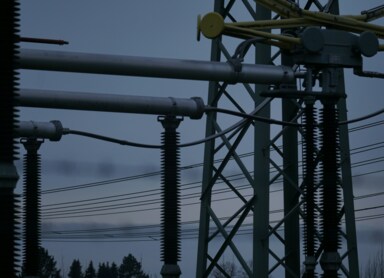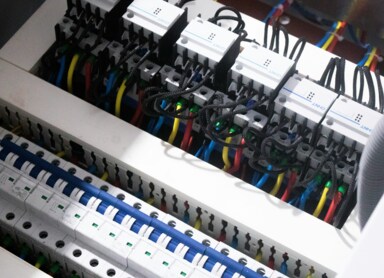What are electricity rate groups and how do they affect bills?
Electricity is used by both consumers and businesses, and it is difficult to imagine the economy functioning without electricity. However, while electricity is supplied to all points of consumption, its purchase can be billed on different terms. This is decided by electricity tariff groups. What is this and when is it worth changing the tariff group?
Electricity Tariff Groups – What Are They and What Types Exist?
Electricity tariff groups refer to the classification of end-users of electricity into various segments. This classification is determined centrally and takes into account the anticipated electricity demand profile. It is obvious that a bakery requires much more electricity to operate than a four-person household but less than a foundry. To organize this segmentation, four tariff groups have been established:
- Tariff A – Intended for very large consumers, such as shipyards, steelworks, or mines, which are powered by high-voltage networks.
- Tariff B – Designed for corporate clients using medium-voltage networks, such as hospitals, hotels, or fuel stations.
- Tariff C – Addressed to small businesses and agricultural households, which use electricity supplied by low-voltage networks.
- Tariff G – A tariff designed for the modest needs of residential households.
The predetermined assignment of a consumer to a tariff means, for example, that an individual consumer in the G tariff group cannot decide to use offers intended for consumers in the C group.
It’s worth noting that on July 1, 2007, the electricity market was liberalized, implementing the TPA principle (Third Party Access). This means that there is now a pluralism of electricity suppliers, and consumers can sign contracts with any of them. At the same time, suppliers are obligated to submit tariffs for approval to the President of the Energy Regulatory Office (URE) only for consumers in the G group. This is one reason why households are protected against unjustified increases in electricity prices, while businesses generally do not benefit from this privilege.
What Electricity Tariff Groups Are Available in Poland?
The assignment to a tariff group can be determined by the so-called "first-level division." However, there is also a second level, as within each tariff group, different tariffs can be distinguished. These tariffs define pricing schemes for electricity usage. Although electricity in residential or business networks always has the same parameters, its cost can vary depending on the time of day.
Tariffs in Group A
Within the A tariff group, three tariffs are distinguished:
- A21 – Single-zone billing, where electricity costs the same throughout the day.
- A22 – Two-zone billing, with peak and off-peak hours.
- A23 – Three-zone billing, distinguishing morning, afternoon, and other hours.
Tariffs in Group B
The B tariff is slightly more complex than the A tariff because it includes consumers categorized as:
- B1 – Powered by medium-voltage networks with a contracted capacity below 40 kW.
- B2 – Powered by medium-voltage networks with a contracted capacity above 40 kW.
For B1 consumers, single-zone (B11) and two-zone (B12) tariffs are available. Meanwhile, B2 consumers can choose from four options:
- B21 – Single-zone tariff.
- B22 – Two-zone tariff.
- B23 – Three-zone tariff.
- B24 – Four-zone tariff.
When reviewing electricity suppliers' offers, note that not all of them will offer every tariff, especially B24. However, you can always switch your electricity supplier.
Tariffs in Group C
Similar to the B tariff, the C tariff is divided into consumers powered by networks with a contracted capacity below 40 kW (C1) and above 40 kW (C2). In each case, single-zone, two-zone, and three-zone tariffs are available, such as C11, C12, and C13.
Additionally, individual suppliers may offer different variations of two-zone tariffs to better match electricity pricing to consumption profiles. For example, the supplier Enea offers the following preferences:
- C22a – Divided into peak and off-peak zones.
- C22b – Divided into daytime and nighttime zones.
- C22w – Reduced rates for nighttime and public holidays.
Tariffs in Group G
Households can also choose from several tariff options. The most common is G11, which provides a uniform electricity price throughout the day. Additionally, suppliers may offer:
- G12 – Two-zone tariff.
- G12w – A tariff with cheaper electricity on weekends and off-peak hours.
- G13 – Three-zone tariff, distinguishing peak, off-peak, and other hours.
- G11p or G11e – Prepaid tariffs for those who install prepaid meters.
- G12as – Anti-smog tariff designed for homes heated with electricity.
Electricity and Tariff Groups – How to Choose the Best One for You?
When choosing a tariff within a tariff group, prioritize the intensity of electricity use during specific days and hours. This is particularly important for businesses, as selecting the right tariff can significantly impact electricity bills.
For example:
- If you run a hair salon open from 10:00 AM to 6:00 PM, consider a two-zone tariff, as some of your working hours will fall during off-peak times.
- If you manage a three-shift manufacturing plant where machines only operate during the night shift, C22b might be the best choice.
How Do Tariff Groups Affect Electricity Bills?
A conscious tariff choice can reduce electricity bills without requiring investments in new machinery or renewable energy technologies (RES). This is an excellent starting point for saving money and managing company resources efficiently. Unlike renewable energy installations, which yield the greatest benefits after amortization, switching tariff groups leads to savings from day one.
If you plan to invest in renewable energy, consider the additional benefits of solutions like photovoltaics. Silicon panels generate the most electricity during the day, so you’ll need to purchase less electricity. By choosing the right tariff, you can lower energy costs when it’s most needed.
Changing Tariff Groups – When Should You Do It?
Consider changing your tariff group when your energy usage model changes. Examples include:
- Expanding your business and increasing production volumes.
- Switching from single-shift to two- or three-shift operations.
- Changing your business profile to one with cyclical increases in electricity consumption.
Most suppliers now allow tariff changes online through application creators. For example, with Tauron, the process is simple and takes only a few minutes. You can also print the application available on the website and send it to the customer service office. Every tariff change is free of charge.
If you want to lower your electricity bills, contact us. We’ll help you choose an electricity supplier and match the tariff to your needs. We’ll also develop a business growth plan considering RES. Don’t overpay in an era of rapidly rising electricity prices!






